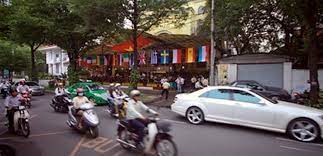Exus Blog Article
Vietnam’s booming auto finance market needs a strong debt collection strategy

Vietnamese auto-finance is big business right now. A buoyant consumer confidence index, constant prime lending rates, and growing car sales have been major drivers set within a healthy economic climate of GDP growth to rival China’s. This is coupled with a surge in new car ownership following a period of stagnation in 2017 while customers waited for a 0% tax on imported cars to kick in on January 1st, 2018.
Vietnam’s auto finance market is projected to reach more than US$5.87 billion credit by the end of 2023 according to the Ken Research report Vietnam Auto Finance Market Outlook to 2024, due to a confluence of factors.
Firstly, the growing purchasing power of the middle class is cited for a projected record growth of nearly US$6 billion by the end of 2019. The subsequent appetite for passenger and commercial vehicles as status symbols, and a preference for their superior comfort levels over the more traditionally favored motorbikes, has been a recent cultural shift. And it’s not only auto finance for personal cars that are seeing growth. App-hailing taxi services such as Grab are on the rise due to their comfort, convenience, and reasonable pricing compared to traditional Vietnamese taxis.
Consumers have been attracted by falling interest rates. Rates were 13.5% per annum in 2012 but had dropped to 7.6% per annum in 2018, making new car purchases far more affordable for a larger proportion of the population.
The Vietnamese government has also played a part in fuelling the surge in personal vehicle owners by improving infrastructure to accommodate the influx of cars and shift away from motorcycles.
Who are the Vietnamese auto lenders?
Five auto-finance providers: VIB Bank, TP Bank, BIDV, Sacom Bank, Toyota Financial Services, make up the bulk of Vietnamese outstanding auto loans. Banks hold the majority of auto financing, however, there is a recent trend towards non-banking financial institutions such as FE Credit, Home Credit, and HD Saison, Toyota Financial Services Vietnam, which offer lower interest rates, quicker approvals, and a simple documentation procedure. Consumer financing is a growth market in Vietnam, and there are a number of financing companies that focus on the lower-income brackets, including Vietnam International Bank, Tien Phong Bank, Sacom Bank, Techcom Bank, Bank for Investment, and Development of Vietnam.
Struggling to collect
So, with such a buoyant market and low-interest rates, why are Vietnamese banks and other loan providers struggling with debt collections and large numbers of nonperforming loans (NPLs)?
According to Dao Minh Tuan, manager of the debt recovery department at private lender Vietnam International Bank (VIB), vehicle pawning accounts for 50% of non-performing car loans. This practice goes against the customer’s agreement with their bank, but it is difficult to enforce. Once a customer has pawned their car it is incredibly difficult for the bank to step in and repossess the vehicle since they are not technically the owners. Unfortunately, the economics of repossessing the car by paying off the pawnbrokers does not stack up since customers often borrow 80-100% of the car’s cost. Suing a customer would take too long and be expensive.
But there are other issues here that are unrelated to customer actions. And auto finance is not the only sector that needs to keep an eye on the prevailing conditions in Vietnam and not get carried away by the buoyancy of the market and opportunities available. The Doi Moi program of economic reforms has led to Vietnam’s GDP growing at least 5% per year since 2010 to a peak of 6.8% in 2017. But, as is often the case, the country’s increased affluence has led to record personal debt.
All the signs are there that in Vietnam, careful management of all non-secured personal debt is needed in order to avoid pushing the country into another banking crisis like that of 2012. If Vietnam fully implements IFRS 9 – the international accounting standard that determines how impaired loans are recognized – it could lead to a spike in the number of bad loans that banks have on their books. Larger institutions are better equipped to deal with meeting the State Bank’s strict NPL and capital adequacy requirements, but smaller banks and private finance providers could struggle.
What are the options?
So, how can banks and other auto finance providers act responsibly and keep their NPLs low?
What’s required now is not just tight control over bad debts, but a good look at the whole lending ecosystem. Better customer service and a strong debt collection strategy are key.
Harnessing the power of debt collections software can also help assess the ongoing risk of a customer defaulting on their loan by giving a series of early warning flags. It can automate debt recovery by reducing the number of repetitive tasks people need to perform, significantly reducing both the time spent and human errors. This means that debt collection staff can focus their efforts on reviewing analysis of the best way to contact an ongoing or potential defaulter, for example, and potentially stopping the situation from worsening. Ultimately, it offers managerial insight to maintain a business’s financial security.
